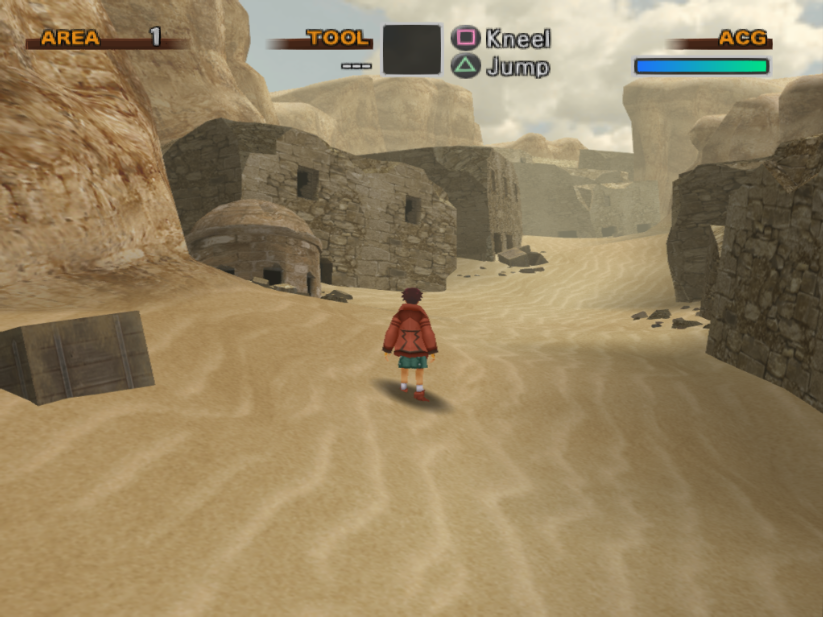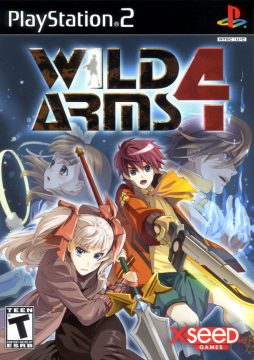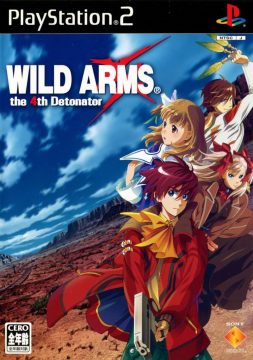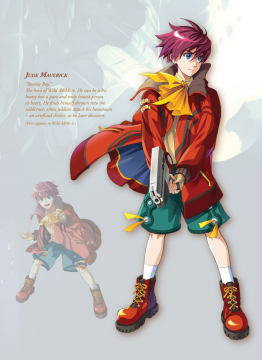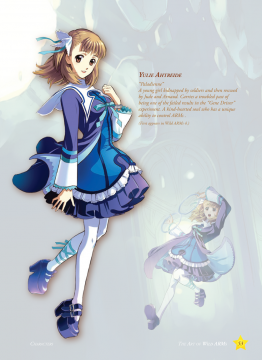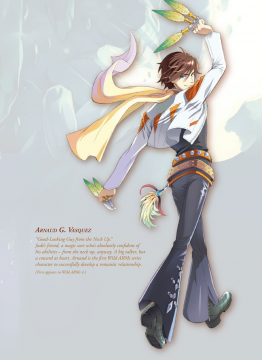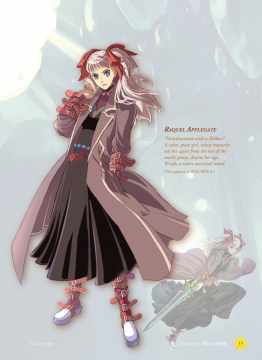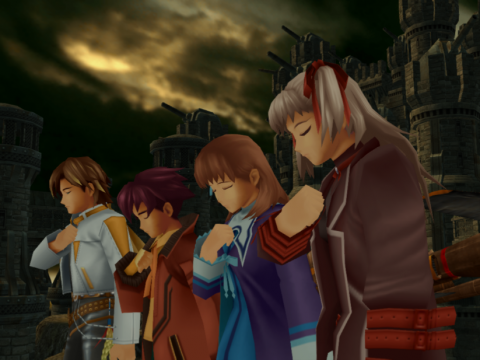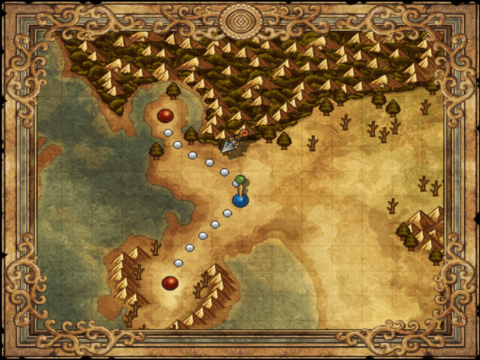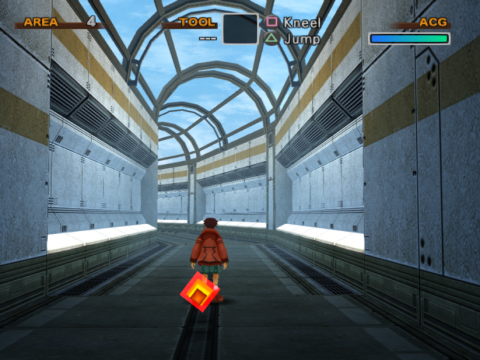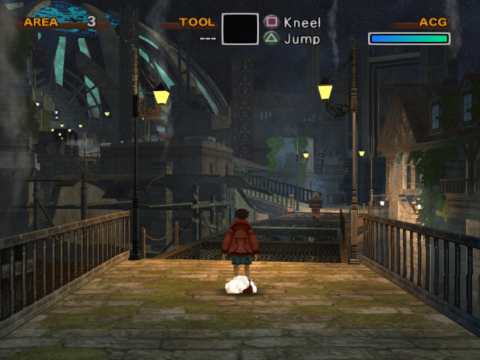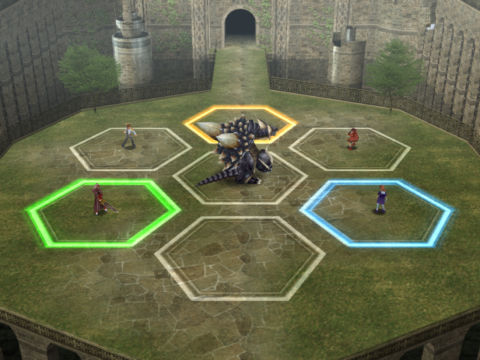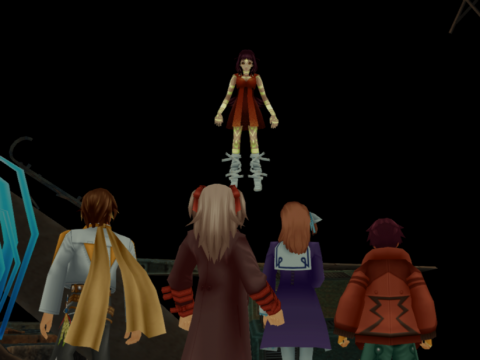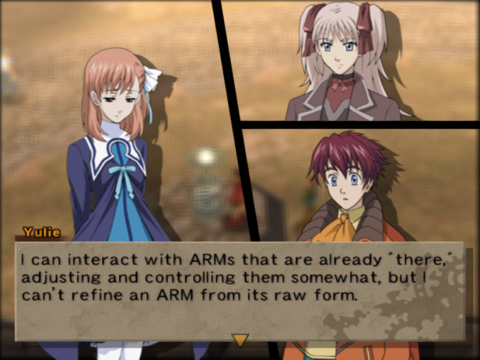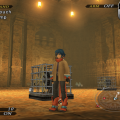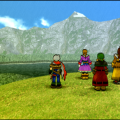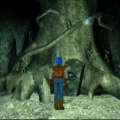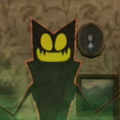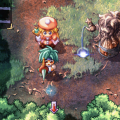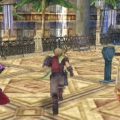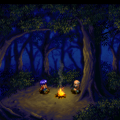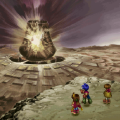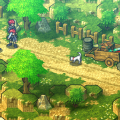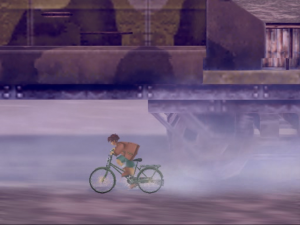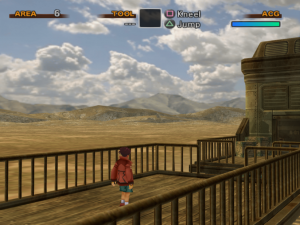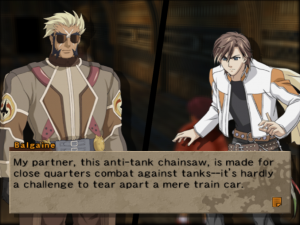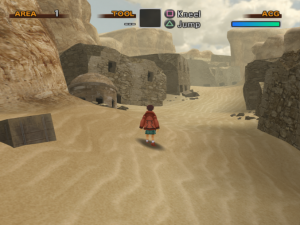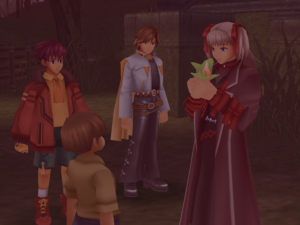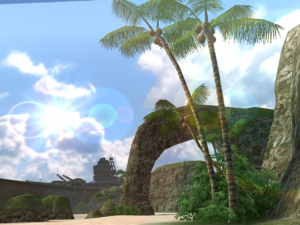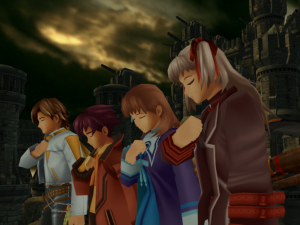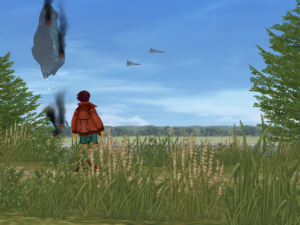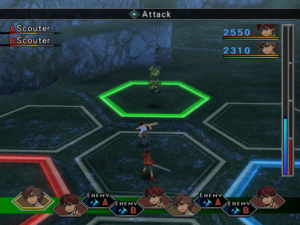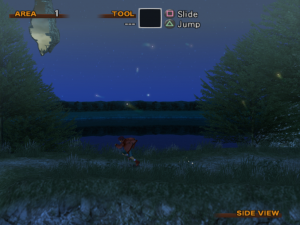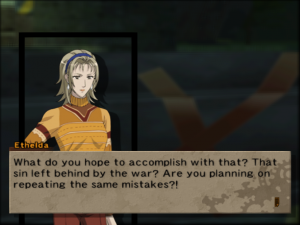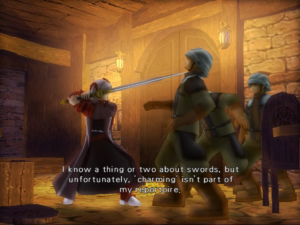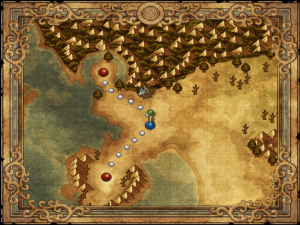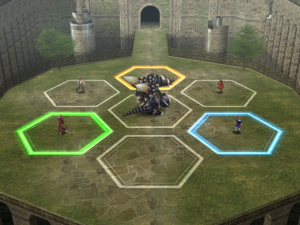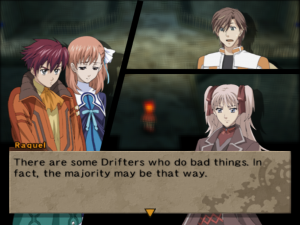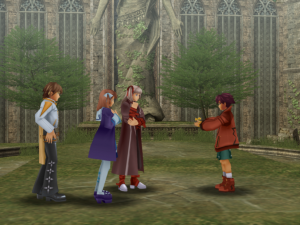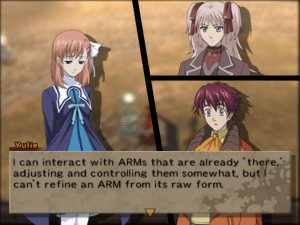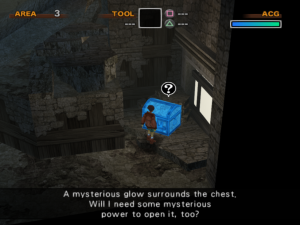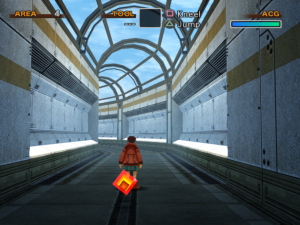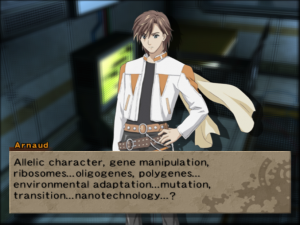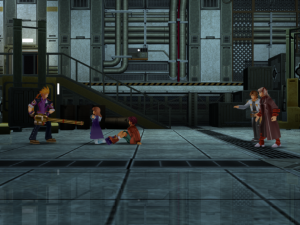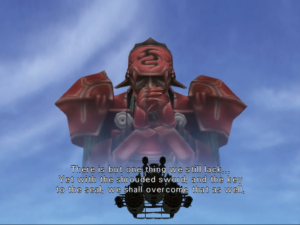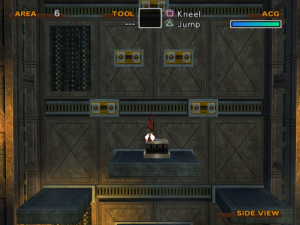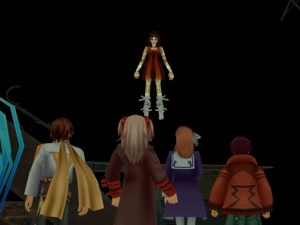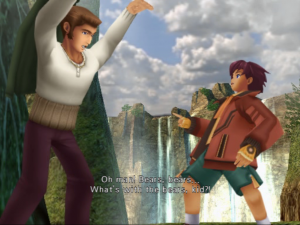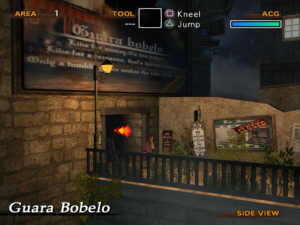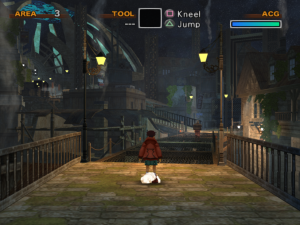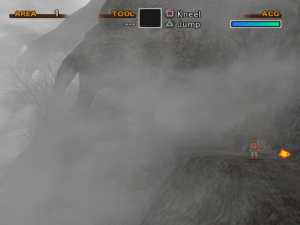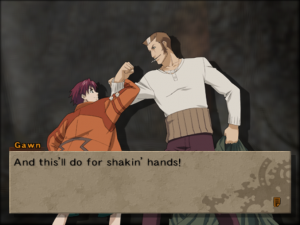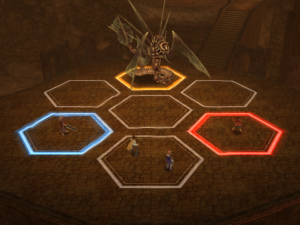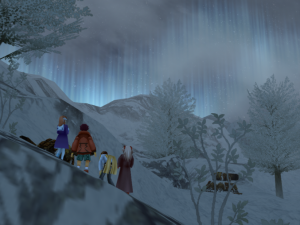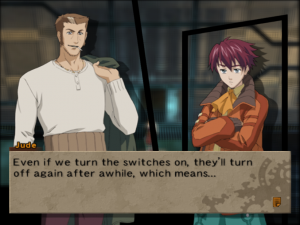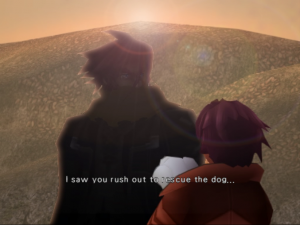Wild Arms 4: The 4th Detonator takes the series in a new direction. Although series’ staples remain and while it and the fifth game remain distinctively JRPGs, they show a different approach to style and gameplay than the last four games. This entry streamlines travel and exploration, introduces platforming elements, and hybridizes the traditional turn-based combat with strategy RPG mechanics. It is probably the least Wild Arms-y of the series, as it reduces the Wild West aesthetic in favor of techno-fantasy trappings that feel more like they came out of a mecha anime.
For all that, Wild Arms 4 is actually probably one of the most accessible. It’s definitely the one to recommend for younger teens since it’s so difficult to get lost or stuck. It also serves as one example of a bridge in JRPG history, as it informs later popular developments in genre design, perhaps best symbolized by Final Fantasy XIII: A more linear experience balanced by a focus on combat mechanics on the one hand and more intensive character and plot scenes on the other.
One day Ciel is attacked by a military force that literally breaks through the sky. It turns out that Yulie has the power to control ARMs, which are, as always, extremely powerful weapons that this military is bent on exploiting. It is also revealed that Jude himself can wield an ARM, as he “bonds” with one during a battle with the military organization. The four teens travel Filgaia, intermittently running away from and confronting their adversaries, searching for ways to protect Yulie and find peace.
Characters
Jude Maverick
A young boy living in the town of Ciel, which exists isolated in a floating sphere in the skies above Filgaia.
Jude infiltrates one of their ships to find Yulie Ahtreide, a girl held captive in one of their cells.
They team up with Arnaud G. Vazquez, a Drifter hired by the military and subsequently betrays them due to ethical differences.
Raquel Applegate
Escaping Ciel and getting to the surface of Filgaia, the team later runs into Raquel Applegate, another Drifter on a quest seeking “beauty in the world”.
As alluded to before, this isn’t the Filgaia we’re used to. Filgaia is still mostly green, still rife with forests, not the desert wasteland of WA3 nor the steampunk-tinged realm of WA2. Nor, for that matter, is it especially medieval-influenced like the original. It’s instead a wartorn landscape of bombed-out towns and desecrated natural environments. Battleships, tanks, weaponry of all sorts litter the areas you’ll walk through. Due to how alive the ecosystems seem to be, one might think it’s set much, much earlier than other games, if we are to assume that they share a continuity. At one point though you walk through the ruins of a Baskar Colony, suggesting that it could in fact be set much later after other games. An offhand line from an NPC also mentions a great warrior of long ago who retired from combat to start a bakery, which might refer to Ashley from WA2. This is probably just a fan reference, though. Continuity between games has never been important in this series, so it’s not worth thinking about too hard.
The setting, more stereotypical though it may be, doesn’t look bad, graphically or aesthetically. The graphics are in fact much better and cleaner than Alter Code F. The main drawback is that it no longer has that unique Wild Arms charm to it. Where WA5 and WAXF, despite their changes, still at least feel like Wild Arms, this one doesn’t quite have the same vibe. It has just a dash of the Western in it, just a taste of desert punk, rather that being completely immersed in them.
The story starts out promising, getting into some of the more complicated and darker elements of warfare that WA2 grasped at. The big two thematic currents are the repercussions of war and genetic engineering. It has a bit of that disturbing body horror from WA3, with people taking drugs to force themselves to “bond” with arms and causing grotesque changes to their forms. There’s also a strong youth versus elder theme running throughout, that people in touch with the millennial/baby boomer divide might be interested in. Essentially, the game posits that the younger generation believes in striving toward peace, while the older generation believes that humankind is predisposed to war and should embrace it as a fact of life. It’s also the first Wild Arms game to actually have a weapon called a Wild Arm.
The worldbuilding toward the start of the game is superb, but it fizzles out as the narrative narrows in toward the conclusion. Earlier portions of the game discuss how the world got so torn apart by the war between government entities known as the Global Union and the Congressional Knights, who stood for dictatorship and parliamentarianism respectively. This history unfortunately gets waylaid and watered down to the point of being forgotten the more you go into the game.
This might in part be an unintentional effect of the structure of the game, in that you don’t go back to a previous towns or areas until the very, very end. A proper worldmap is gone, replaced by dot-and-line paths. The effect of this is it no longer feels like a cohesive world, more like a series of set pieces. Revisiting old locations over and over again in JRPGs can be tedious, but it’s great for worldbuilding because you get to see the subtle changes every time you go back. Like the Baskar Colony in WA3 or Adlehyde in WA. If you can’t go back, you don’t really ever get to know a place, don’t really get to feel a stake in them. The stories that you learn about places toward the beginning of the game are never returned to like they should be.
Presentation-wise, Wild Arms 4 cleverly cuts production corners in its limited use of 3D character models. It’s almost part visual novel. Whenever the game cuts for dialogue, the screen blurs and brings up 2D anime portraits of the characters. They move around like in a visual novel, using comic book-like cuts to signify action, and each character has a set of half a dozen expressions or so. This was actually a smart move, given how much dialogue there is in this game. And besides, despite how clean the character models look this time around, they just aren’t as expressive as the anime portraits can be.
The big strength of the writing is the character interactions. Characters will frequently pause in the middle of dungeons or towns to chat, bicker, figure out what to do next. They’re a lively team. A nice addition is the “Meeting” option you can have at the save points in town. “Meeting” gives you the options of gathering as a group to talk or for Jude to have personal chats with each individual member. These are some of the most delightful examples of dialogue and subtle character development in the game, often lighthearted and brilliantly showing off each character’s personality. None of the characters are especially original, but they have small details that make them stand out (Raquel in particular). They serve the story well and their dynamics work. The Meeting function is a welcome addition, considering how much depth it adds to the main party, and one wonders how well such a function would have served earlier games in the series. Certainly the cast of WA3 had plenty to talk about.
This is the first Wild Arms game with voice acting. It’s not good. Not unlistenable either, to be fair. If you’re used to anime dubs, you could certainly find worse. It’s just something one might be a bit embarrassed to hear. At least there’s nothing quite as bad as WA5‘s Carol.
There’s a lot of off-the-walls ridiculous, shounen anime feats of strength in this game, which might turn off some players. A character punches a torpedo to destroy it at one point, for instance. A side villain has an “anti-tank chainsaw”, a ludicrous weapon that he uses in one scene to cut an entire traincar in half. One scene has Jude racing after a train on a bicycle and somehow catching up with it. Another has a character wield an enormous metal pillar and drop it over a ravine to use as a bridge. In general, everything action oriented in the cutscenes and combat seems a little exaggerated. Raquel’s sword would give Cloud Strife’s weaponry a run for its money (though the size of it is in line with how incredibly overpowered she is compared to the rest of the team), and it seems like every ARM you come across just gets bigger and bigger.
Platforming is one of the more entertaining innovations. It’s never especially difficult, but makes the game world more engaging to interact with. Locations are either fully explorable in all directions or they’re fixed at a side view. Side view areas are usually more platform-oriented, 360 movement areas more puzzle-oriented. You can run, jump, double-jump, slide, and stomp on the ground. Jude also has an “Accelerator” that allows you to move extra-fast, which comes in handy when trying to dodge obstacles like turbines, flamethrowers, and lasers. The Accelerator, which slows down the rest of the world and filters everything a bluish shade, also reveals extra gella, which you can gather up in sequence to gather more. Each little bag of gella is only 10g, but it is multiplied by 2 every time you gather them within the same use of the Accelerator.
Permanent tools have been eliminated, replaced by ones you’ll find scattered throughout the environment. You’ll find here many of the staples of the Wild Arms series: Bombs, a flame staff, a teleportation staff, a mist cloak, etc. The most common you’ll use are the sword and the crate, which you mostly use to hit switches.
Sadly, the ENC gauge is gone, replaced by the familiar random encounter. As a consolation, though, most save points have a “Break” function in them, wherein you have to defeat an especially difficult battle and afterward get the option to turn battles on or off in that area.
Combat is now based on the “Hex” system. Whenever an encounter occurs, your player-characters are set onto a grid of seven hexagons, six surrounding one in the center. To deliver most attacks you have to be in an adjacent hex. Jude, since he has a gun, can shoot from afar, but only if it’s in a straight path from his current location. Most magic can be cast on any hex, meanwhile, giving Arnaud an advantage, provided he has enough MP (we again are set with scarce magic-healing items in this one, though full-heal savepoints are numerous). Other skills may allow you to hit multiple hexes are once. One of Raquel’s skills, for example, has her slashing all surrounding hexes. Status effects also now effect hexes instead of targets.
In addition, any given battle will have three elemental hexes, which you can take advantage of to exploit weaknesses for extra damage. A fire hex will infuse Arnaud’s Blast ability with fire power, making water-based enemies more susceptible. It works both ways however, as sitting in an elemental hex will make you extra susceptible to its opposing element, and even random encounters can wipe out your team with an unlucky draw of elemental hexes.
Force Abilities are back, again limited to one per character. Jude has Mystic this time around, the first time a male character has it in the series. (One small consolation in a game fraught with questionable gender politics, but we can’t get into that without spoilers.) Raquel has an ability that allows her to take two consecutive actions. Arnaud can Jump, which means going to any given hex on the grid and taking another turn. Yulie can summon Mediums, which can only be cast when she’s in the corresponding elemental hex. They can, at times, be gamebreakingly powerful.
Characters now have combo abilities too. These are powerful skills that multiple characters do together as long as they’re standing on the same hex. They gain these at random. Occasionally characters will “discover” a combo ability and if enough FP is available, they can unleash powerful attacks together. Most are two-person abilities, but further into the game you’ll discover three or even four person abilities.
Wild Arms 4‘s combat suffers balance issues. It can swing from being laughably easy to ludicrously hard at a moment’s notice. Some battles you might find yourself dying from a cheap series of lucky strikes before you even get a turn. Characters don’t really gain too much HP and MP as they level, HP usually staying somewhere in the 2000s and MP in the 150 to 200s range if you don’t take advantage of the sliding GC scale (which I’ll explain soon), and most players probably won’t. Unfortunately, enemy damage does increase, so at a certain point in the game monsters can hit for half your health in one go. Graciously, Wild Arms 4 has a simple and forgiving game over system. Gimel Coins have been eliminated, and you can replay battles as many times as possible. Your HP also regenerates after every battle.
Leveling up actually doesn’t increase stats. What it does do is give you more GCP, or Growth and Customization Points, which are what you use to allocate personal skills. Your amount of GCP is equal to your level. Personal Skills are no longer dependent on accessories, and rather a set list of skills that you gradually go down and master. Personal Skills are now mostly just regular abilities, some passive and some active. Jude’s first two personal skills, for instance, are Phantom Line, an attack that deals damage to two hexes in a straight line, and Defender, which is an automatic guard against physical attacks that protects other party members in the same hex. Mixed in with these are Class Level Ups, the real way you gain stats, as they give you 100+ HP, 10+ MP, and 10+ on all status parameters. These are more rare, and most players will probably only reach about the fifth Class Level Up.
The sliding GC scale is a way to reallocate your stats, most visibly HP and MP. Depending on how many GCP you have in reserve (ie not being using on Personal Skills) you use them instead to gain higher HP and MP. Each GCP in reserve gives you a little boost, and you can slide a scale to get either more HP and less MP or vice versa. This function can be handy for the strategic thinker, but most players will probably just want to master their Personal Skills. It makes the game a bit easier if exploited, but it isn’t necessary. The best tactic here is probably to just not put any GCP toward Personal Skills until you know you have enough to learn them. That way, you always have a little GCP on reserve, so you thus always have a little stat bonus.
Sidequests exist in this game, but they’re all crammed in at the very end like in Alter Code F. There’s an arena, a series of minigames, and numerous secret bosses, but again you can’t really access them till the end of the game. This creates a lopsided experience, in which all the non-linearity suddenly appears when you’re expecting the game to end soon. It kills the tension to go back and do the quests. You literally have to leave the final dungeon when you’re in the middle of it. A lot of the sidequests in the first three Wild Arms games appear toward the end too, but they’re staggered and allow you to complete them back-and-forth with the main quest. Ragu O’ Ragla appears again, but unfortunately you have to either play the game twice or import completed data from Alter Code F over to get to it. Millennium Puzzles are gone, replaced by a series of platformer minigames that require more reflex than critical thinking.
The music is lovely as always for the series, still infused with Ennio Morricone Western influence. Michiko Naruke returns as composer, though she contributes songs alongside others like Masato Kouda, Nobuyuki Shimizu, and Ryuta Suzuki, all of whom imitate Naruke’s style. The Western influence, while certainly still present throughout a number of songs, is more muted this time around, setting along with the rest of a game a more typical mood for a fantasy JRPG.
This sequel was a jarring change for the series, but arguably a welcome and needed one. As mentioned in the WA3 article, the old structure felt like it had already peaked, and as Alter Code F proved, there’s only so much further you can elaborate upon the old mechanics. So Wild Arms 4 isn’t perfect, might not even be good according to some. But it clearly tried to keep the series going by reinventing it, and this reinvention, whether you appreciate it or not, was worth trying. The hex system, the platforming, and other new additions to the series were refined still further in the fifth mainline game.
